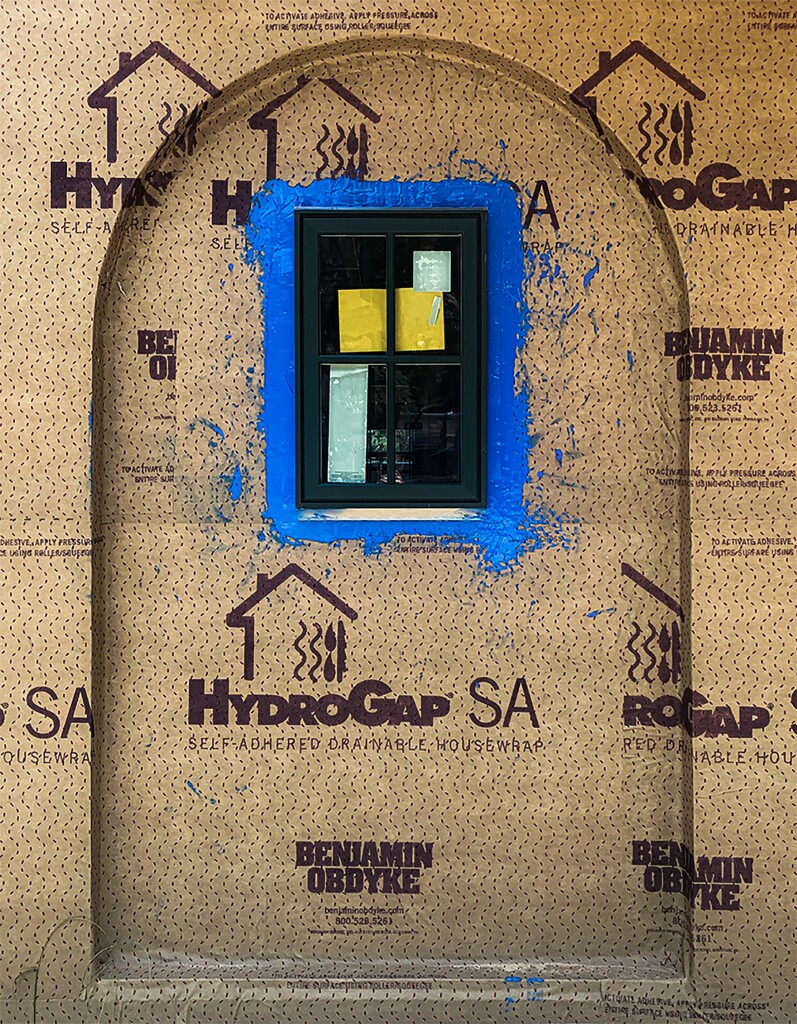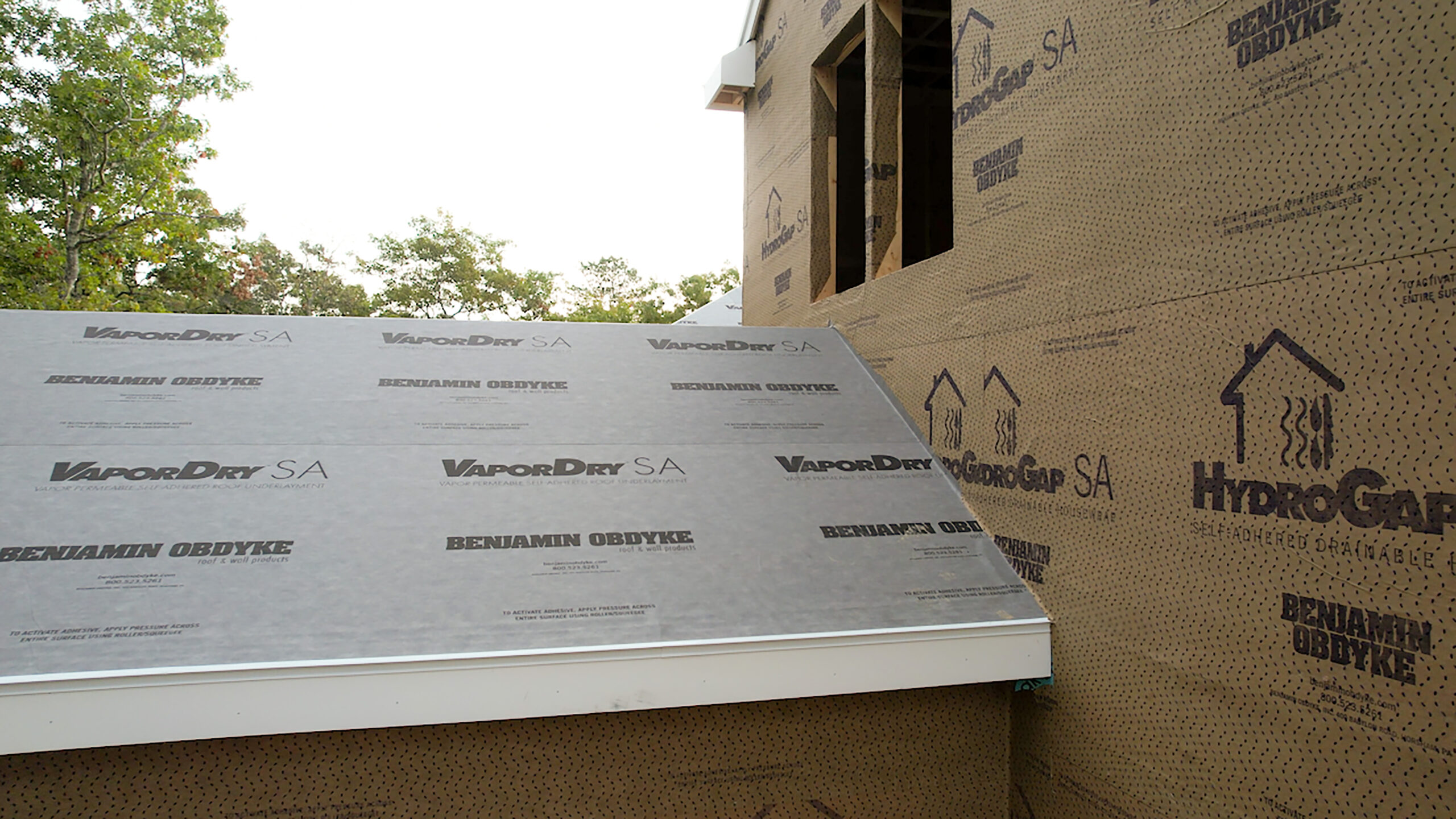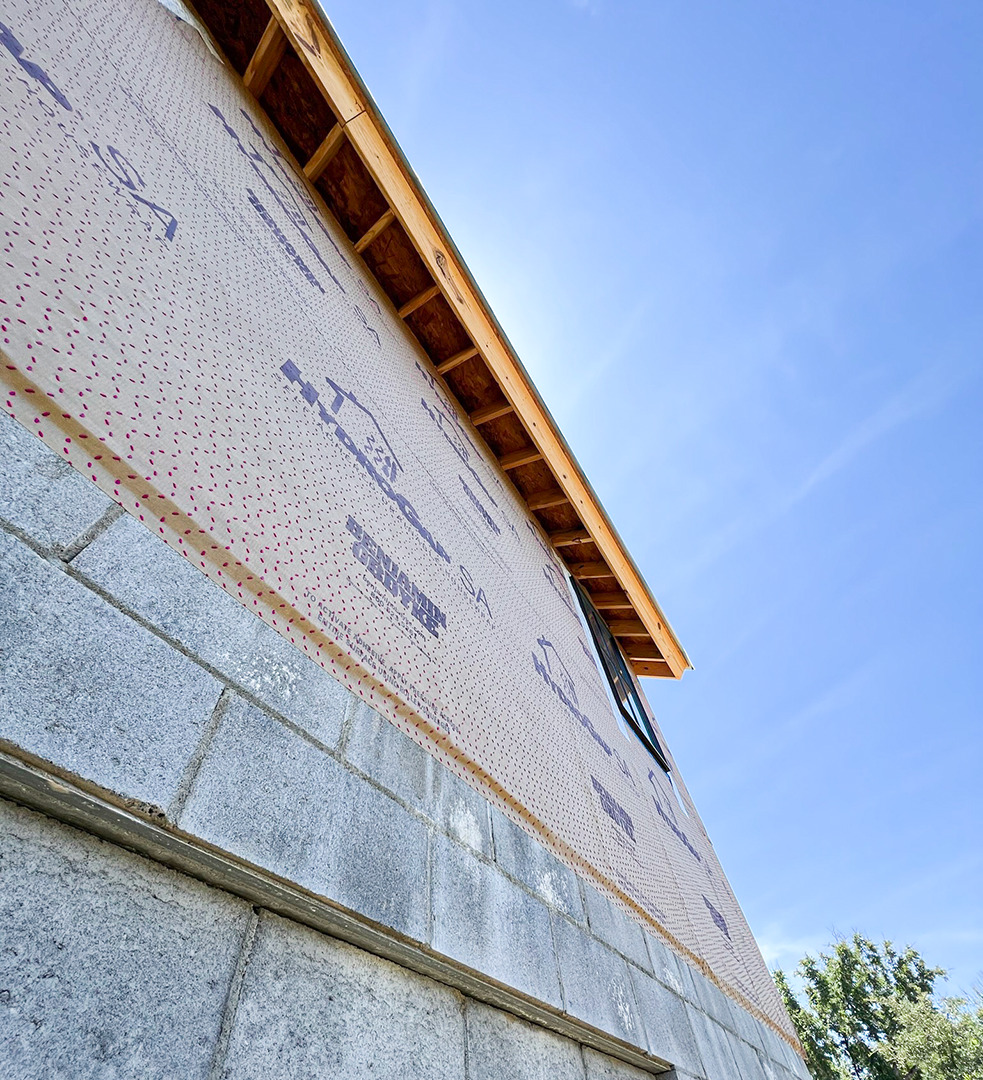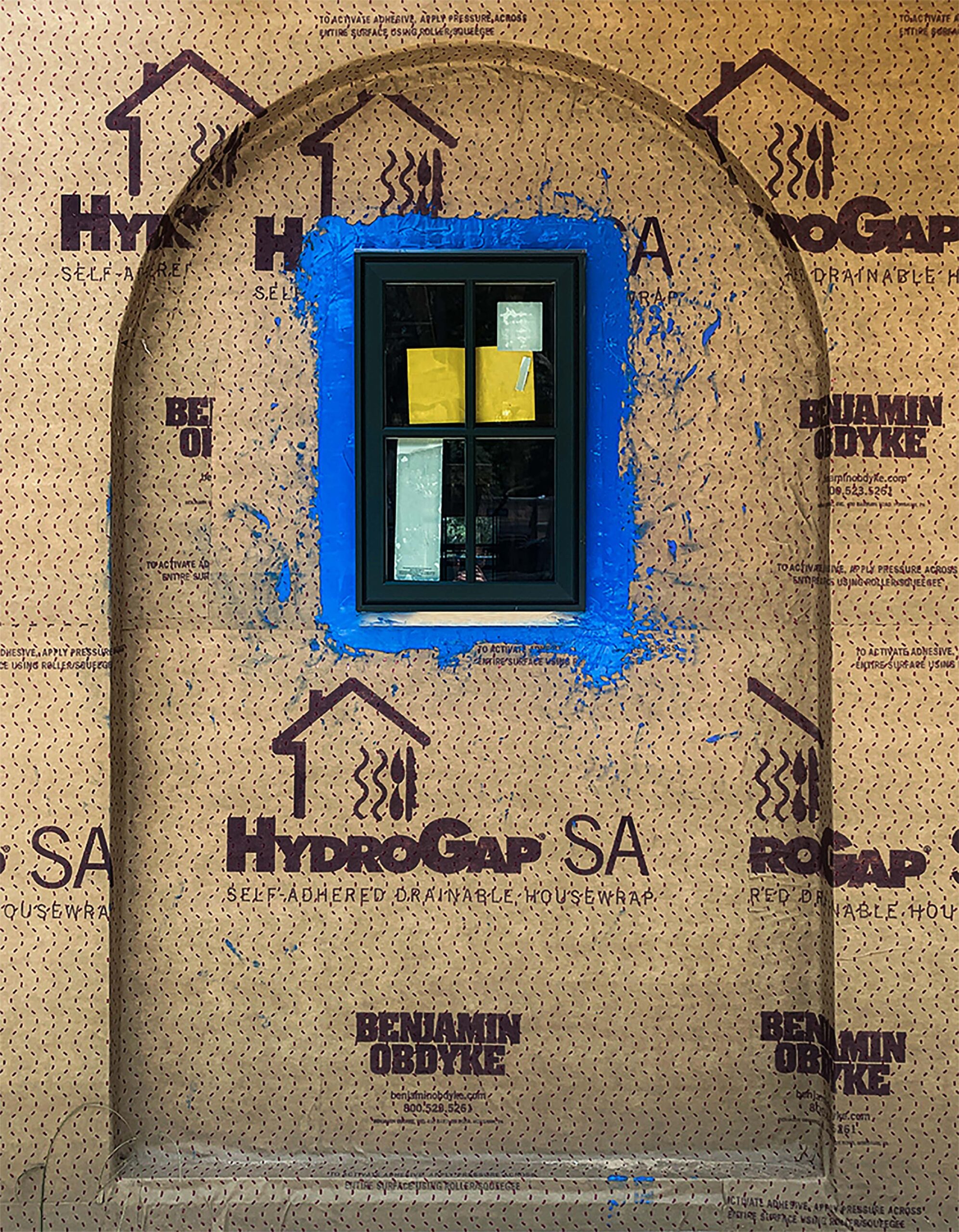No wall system is “perfect.” But you can get pretty close by paying attention to building science and understanding how the products and systems you use respond to each other and the exterior environment. Creating the ideal wall system starts with understanding “the 4 Ds”: deflection, drainage, drying, and durability. By looking at the envelope with these four factors in mind, you can help ensure water and moisture stay out of the wall system.
Wall Systems: Deflection
Deflection is the first layer of defense in a wall system, making sure the design has elements to block out the majority of water and wind. This includes cladding and roofing, of course, but also proper overhangs; even a 2” overhang can result in a lot less water intrusion into the wall.
Wall Systems: Drainage
Claddings are not perfect, so it’s inevitable that some bulk water will reach the wall cavity. This is why the wall system must have a drainage component. Ideally, this is addressed via a rainscreen, such as Slicker® HP, or with a drainable housewrap such as HydroGap® SA. Both options provide a path for drainage using gravity, and a rainscreen offers additional protection by creating a capillary bread.

HydroGap SA Samples
GET YOUR FREE SAMPLES TODAY OF THE FIRST EVER SELF-ADHERED DRAINABLE HOUSEWRAP
Wall Systems Drying
When homes were less efficient, cracks and leaks provided airflow to help dry out the wall system. Today’s homes are much more efficient, and therefore tighter, so most wall systems will need another method of introducing airflow for drying. The most efficient approach is a ventilated rainscreen, which combines a rainscreen with an opening at the top of the wall to create a convective current that pushes warm, moist air up and out.
Wall Systems: Durability
There are few elements of the home that are more critical to its longevity and performance than the building envelope. In other words, it’s not the place to skimp on materials. The products that make up the wall system—from the framing to the housewrap—must be able to handle moisture, thermal movement, and expansion and contraction. And if there are certain elements that are less durable, others must take up the slack.
Tackling the 4 Ds With a Systems Approach
One of the easiest ways to design a robust, near-perfect wall system is by using a systems approach. By looking at the wall as a system rather than a sum of parts, you can see the path of moisture and air and how the products and installation methods give those elements a path into and out of the wall. For example, even if a wall system uses a flat housewrap, making sure it’s integrated with flashing, windows, and foundation to create a proper drainage path can make a big difference. A systems approach also can ensure products work together. It also may come with a stronger warranty than the products alone. (See examples of how Benjamin Obdyke’s products combine into building systems here.)




